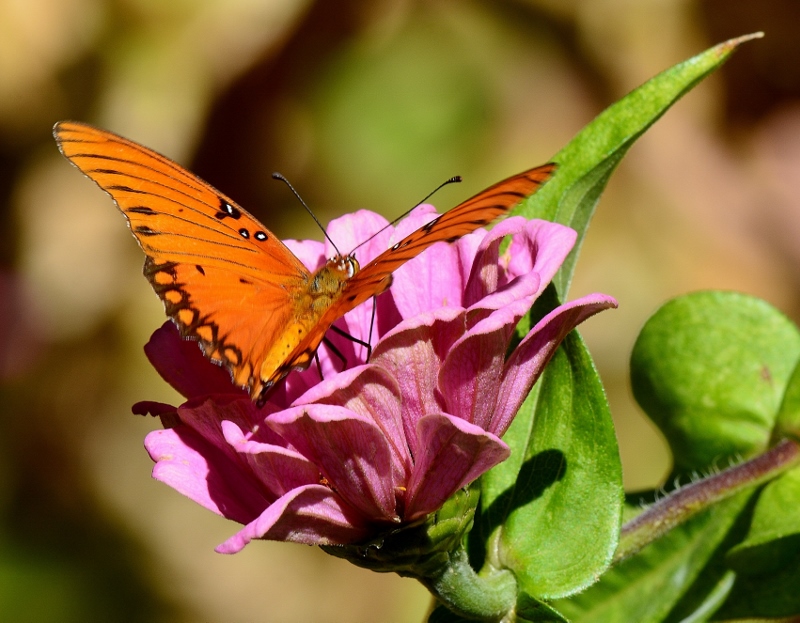
An Island of Our Own


Annuals, like Zinnia, attract several species of butterflies to the island, including tiger swallowtails, monarchs, pipevine swallowtails, buckeyes, painted ladies, and this gorgeous Gulf fritillary. Photo by Steven T. Callan.
Over the years, Kathy and I have often dreamed of escaping today’s fast-paced, hectic world and moving to an island of our own—an island of trees, flowers, and abundant wildlife, where we could experience the joys of nature without leaving the confines of our own property. Realizing that buying an island wasn’t a realistic option, we decided to do the next best thing and create one on our three-acre patch of oak woodland in the foothills of Northern California.
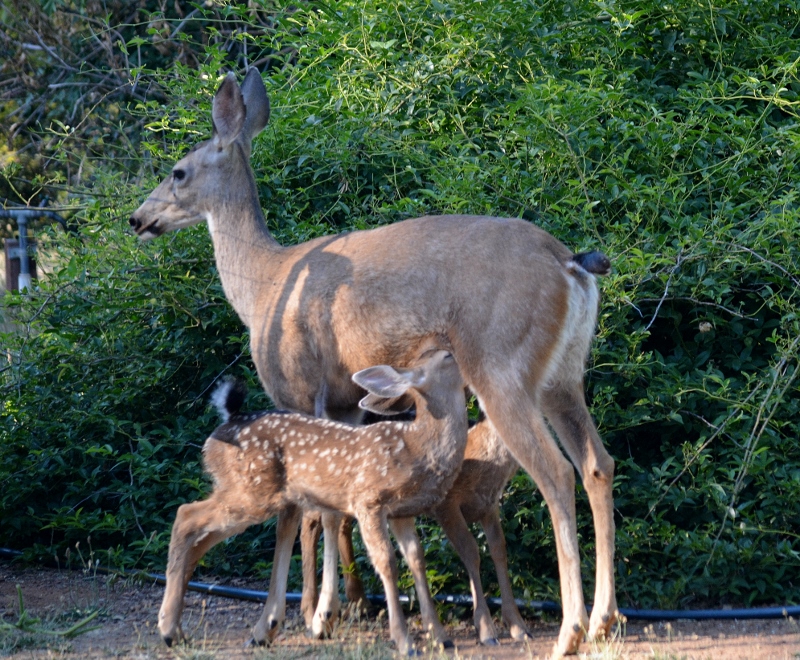

Several generations of deer have been born and raised on the island. By offering plenty of acorns and alternate food sources like the mature Lady Banks rose bush you see in the background, we’ve had few problems with deer invading our vegetable garden. Photo by Steven T. Callan.
Everyone knows you can’t have wildlife without adequate habitat: food, water, cover, and living space. With over 200 mature blue oaks and a dozen old-growth gray pines growing on the island, we already had a good start. Hawks, owls, and turkey vultures roost and sometimes nest in the branches, while deer, gray squirrels, woodpeckers, wild turkeys, and wood ducks feed on the bounty of acorns and pine nuts these beneficial trees provide. All of the wildlife that honor us with their presence take advantage of the numerous birdbaths and water containers we’ve provided. These invaluable water sources are absolutely essential during Northern California’s long, hot summers.
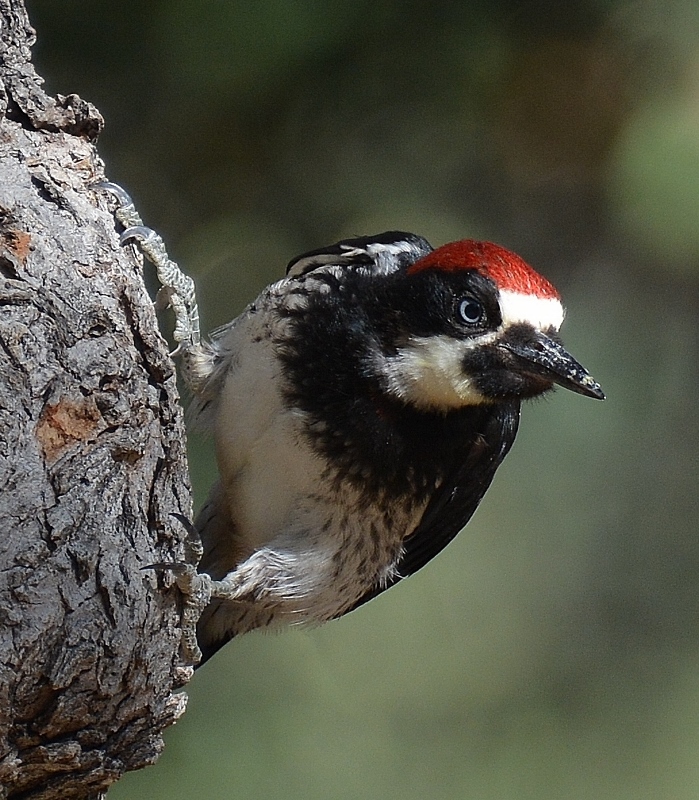

Acorn woodpeckers, along with deer, gray squirrels, wild turkeys, and wood ducks, take advantage of the bounty of acorns our blue oaks provide. Photo by Steven T. Callan.
Our first step in attracting hummingbirds, goldfinches, titmice, nuthatches, butterflies, and native bumblebees was ridding our yard of water-guzzling domestic fescue and replacing it with rock gardens of wildlife-friendly plants. Annuals like California poppy, Rudbeckia, Zinnia, and sunflowers offer beauty and sustenance every spring and early summer. Perennials like pomegranate, Gaillardia, Verbena, Lantana, Teucrium, and red hot poker provide nectar and cover for much of the year.
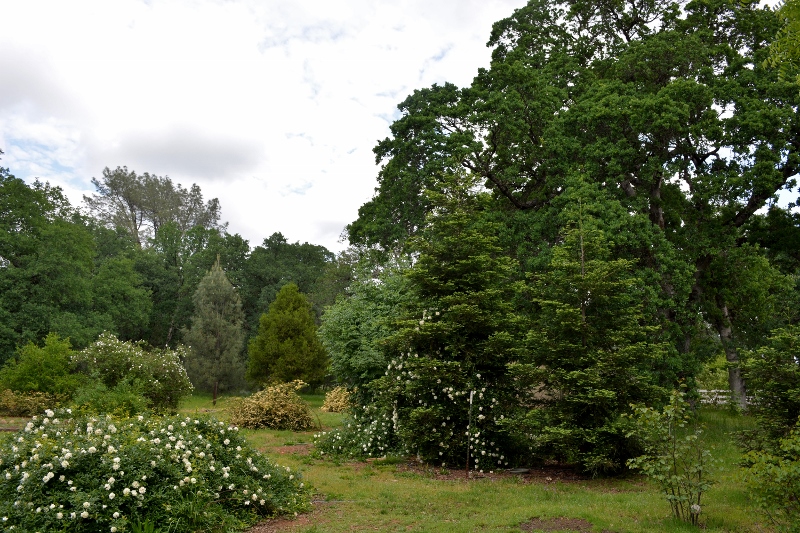

Spring on the island, with the Lady Banks rose in bloom. Photo by Steven T. Callan.
Over the years, we’ve planted natives like toyon, California pipevine, Oregon grape, elderberry, coffeeberry, snowberry, Salvia, Penstemon, and Epilobium throughout the island. In addition to saving water, providing natural cover, and offering nourishment, they invite species of birds and insects that we might not find on the island otherwise. Elderberries attract phainopepla—a desert bird—as well as orioles and western tanagers. Toyon berries encourage rare visits from cedar waxwings. California pipevine is essential to the life cycle of pipevine swallowtail butterflies.
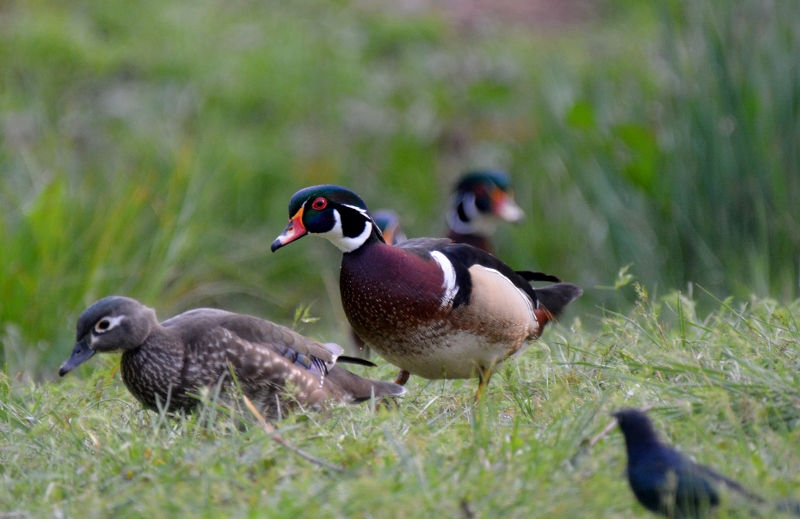

Wood ducks make periodic nighttime visits to the island during the winter months. Flocks of twenty to fifty birds arrive at dusk, circle the backyard, land in the oak branches, and flutter to the ground. Forming a line, they march through the backyard, gobbling up acorns as they go. When their esophaguses are full, they burst into the air and fly away. Photo by Steven T. Callan.
Kathy and I never tire of watching Anna’s, rufous, and black-chinned hummingbirds dart in and out of the garden. Once or twice each year, we’re visited by diminutive calliopes. We’ve found that as long as we’re able to provide nectar-producing flowers and attract tiny flying insects to the island, hummingbird feeders aren’t necessary.
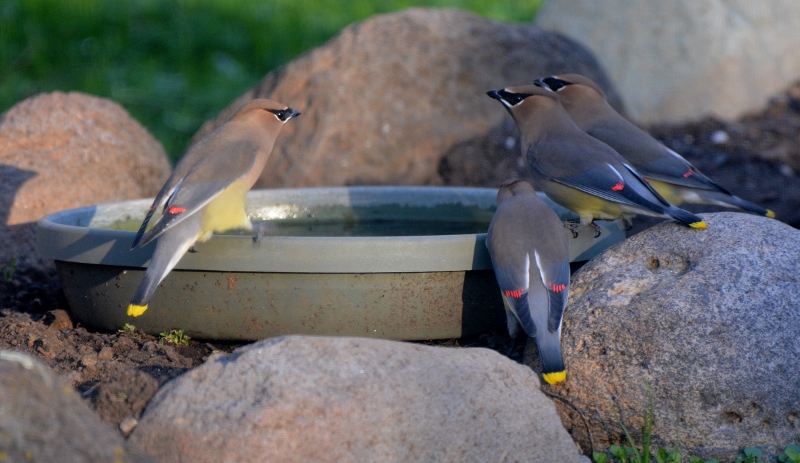

All of the wildlife on the island, including these cedar waxwings, take advantage of the many water sources we provide. Photo by Steven T. Callan.
During winter and early spring, we look forward to hosting white-crowned sparrows, juncos, robins, flickers, mockingbirds, and towhees. They take advantage of the healthy menu of seeds, insects, grubs, and other food items our island has to offer. We sometimes supplement their diet with nutritious black sunflower seeds that we buy from the local feed store; sunflower plants, from ten-foot-high mammoths to much smaller ornamentals, serve the same purpose during the summer months, encouraging regular visits from woodpeckers, goldfinches, nuthatches, titmice, and grosbeaks.
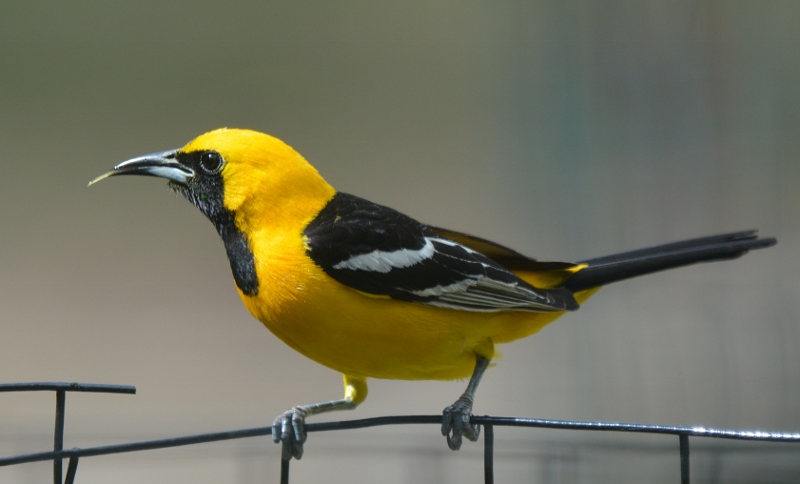

Plantings of elderberry and red hot poker entice species that we might not see on the island otherwise. Last spring, Kathy and I were delighted to see this spectacularly colored hooded oriole perched right outside our back window. Photo by Steven T. Callan.
Migratory cavity-nesting birds like bluebirds, nuthatches, violet-green swallows, and flycatchers generally arrive in early spring to claim the various nest boxes I’ve installed in strategic locations around the island. (A list of bird species that have graced us with their presence during our thirty-five years on the island is available by clicking this link.)
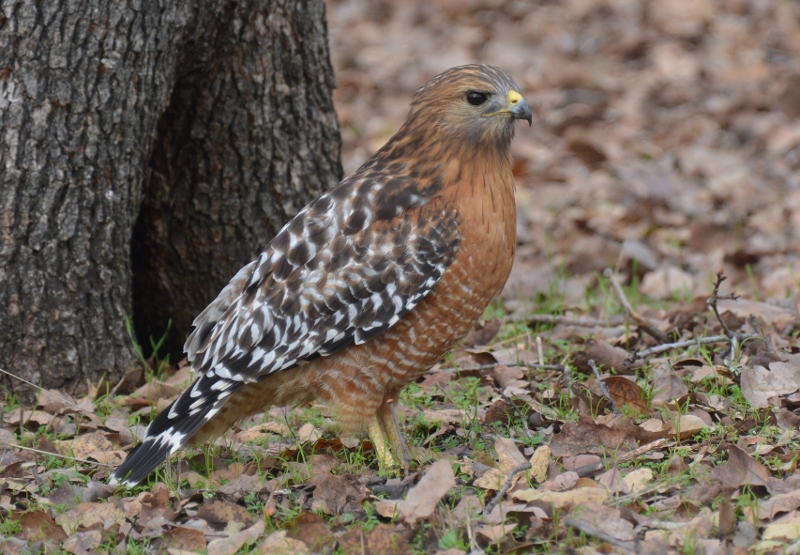

Our resident red-shouldered hawk flies from perch to perch, scanning the ground for movement. When she can’t find a gopher or a ground squirrel, she’ll swoop down and swallow up a Jerusalem cricket or an earthworm. She had devoured a tasty earthworm just before I snapped this photo. Photo by Steven T. Callan.
Quail, doves, towhees, and other ground-feeding birds live in constant danger of being snatched up by Cooper’s hawks or ambushed by the neighbor’s cat. I’ve provided cover in the form of thorny Lady Banks rose brambles throughout the yard and brush piles along the perimeter. Fast-growing Lady Banks rose plants have also become a reliable food source for deer that permanently live on or pass through the island. Once these plants reach maturity, deer can munch all they want without causing damage.
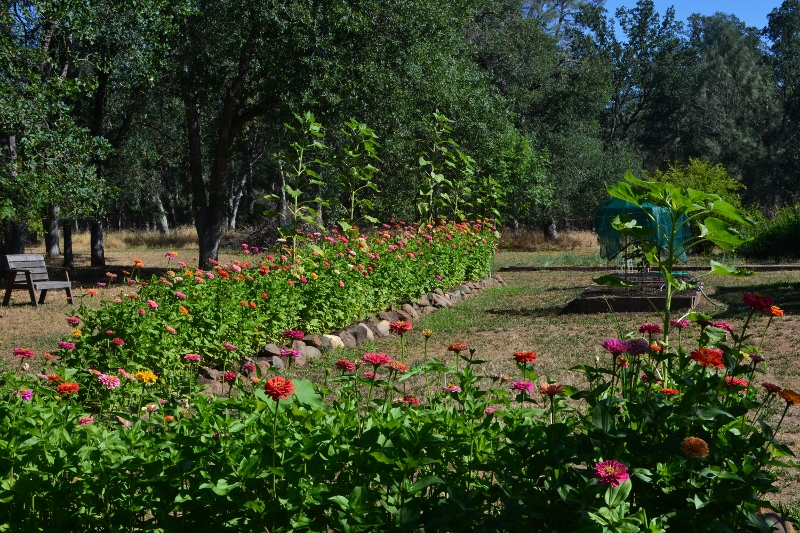

We plant zinnias and sunflowers every spring. Zinnias attract hummingbirds, butterflies, and native bees, while sunflowers invite seed-eating birds like goldfinches, nuthatches, titmice, woodpeckers, and grosbeaks. Photo by Steven T. Callan.
Kathy and I like to say that we’re an equal-opportunity island. All reptiles and amphibians are welcome. Fence lizards, alligator lizards, sharp-tailed snakes, gopher snakes, garter snakes, and an occasional king snake provide us with unending enjoyment during the warmer months. Pacific tree frogs and western toads help to rid the garden of pests.
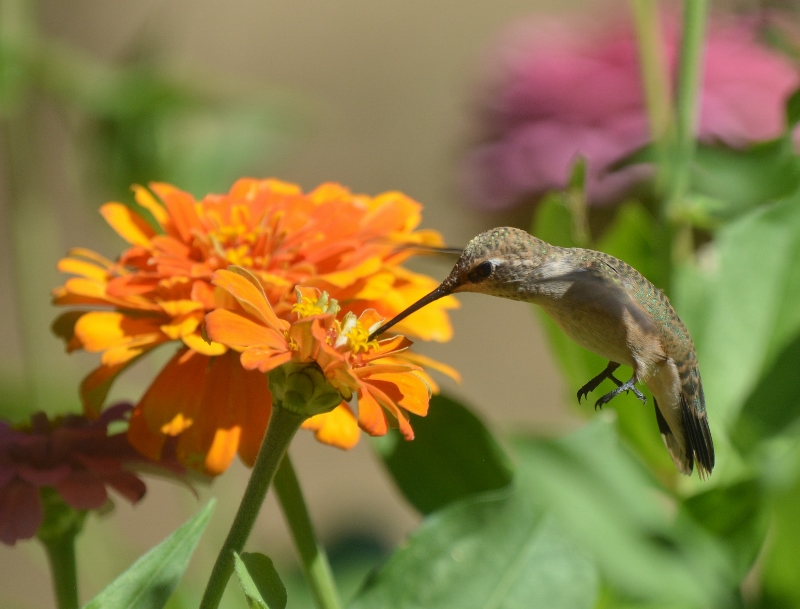

We’ve found that hummingbird feeders aren’t necessary when our zinnias are in bloom. Photo by Steven T. Callan.
Speaking of pests, we’ve found that natural pest control works remarkably well if you give it a chance. Red-shouldered hawks, great horned owls, and screech owls do a marvelous job of keeping ground squirrels, mice, and gophers under control. Since we no longer have a lawn, we don’t worry about moles.
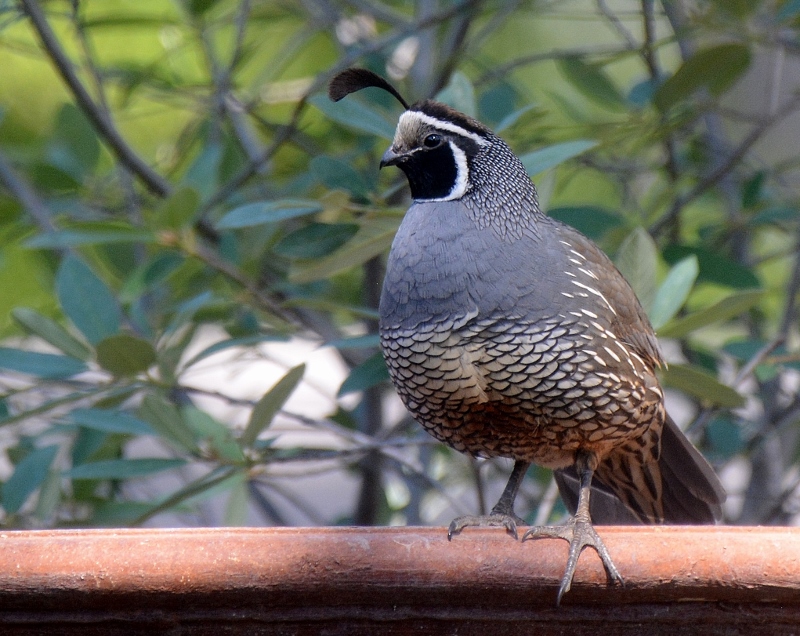

A rooster quail stands guard from a birdbath while his covey scratches for seeds under a coffeeberry bush in the front yard. Photo by Steven T. Callan.
Violet-green swallows nest on the island and forage throughout the day for mosquitoes to feed their young. Bats swoop up mosquitoes at night, while voracious western toads patrol the undergrowth for other harmful insects. One mature western toad can eat as many as 10,000 insects in a single summer season.
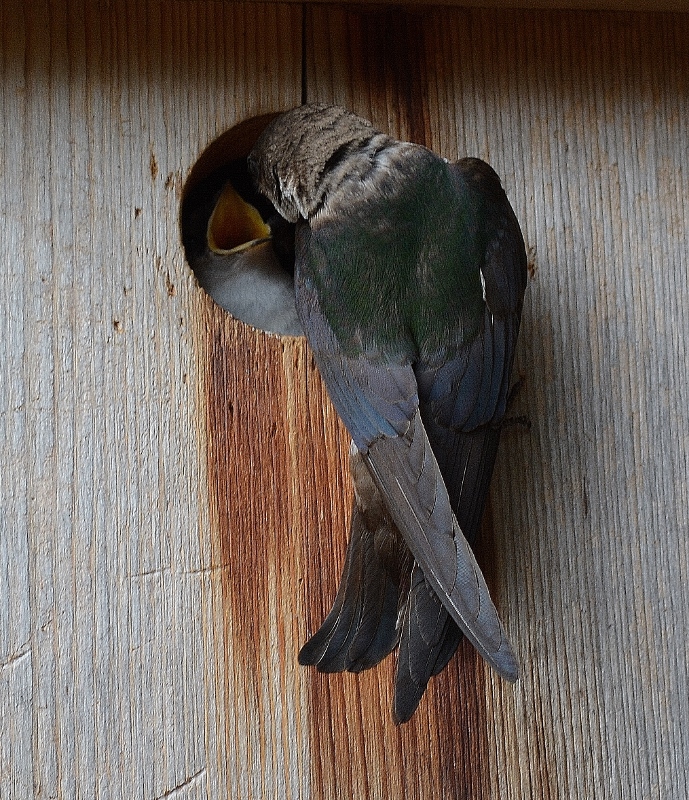

Violet-green swallows, bluebirds, nuthatches, and ash-throated flycatchers take advantage of the nest boxes we have placed in strategic locations around our island. Photo by Kathy Callan.
You don’t have to live on three acres of oak woodland in Northern California to experience the joys of nature. Kathy and I recently visited relatives in LA’s San Fernando Valley and spent several hours strolling through residential neighborhoods. Largely due to water restrictions, many front yards had been converted from traditional lawns and shrubs to gardens of drought-tolerant native plants, nectar-laden flowers, and wildlife-friendly perennials. Close behind were butterflies, hummingbirds, and, in some cases, native bumblebees.
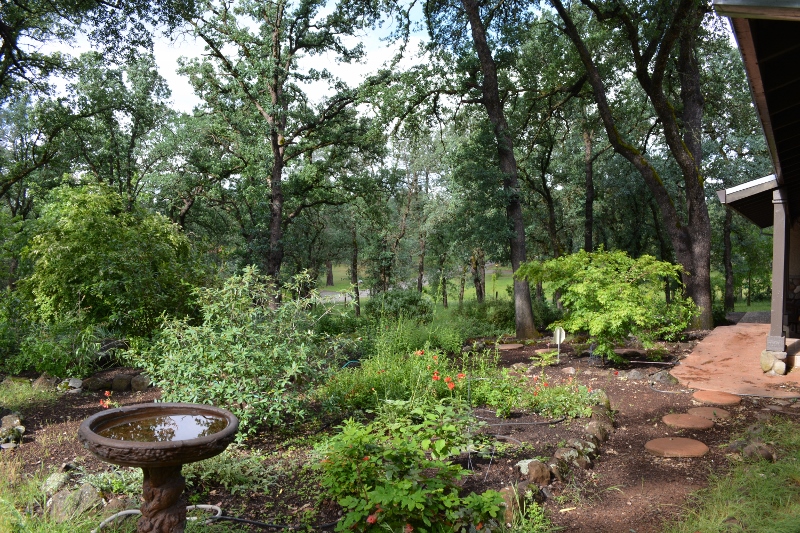

Years ago, we did away with water-guzzling domestic fescue and replaced it with rock gardens of wildlife-friendly plants. Every morning, while I write, I look forward to seeing birds, butterflies, deer, and gray squirrels right outside my office window. Photo by Steven T. Callan.
Want to create an island of your own? Your local native plant society can give you some great ideas. The possibilities are endless.
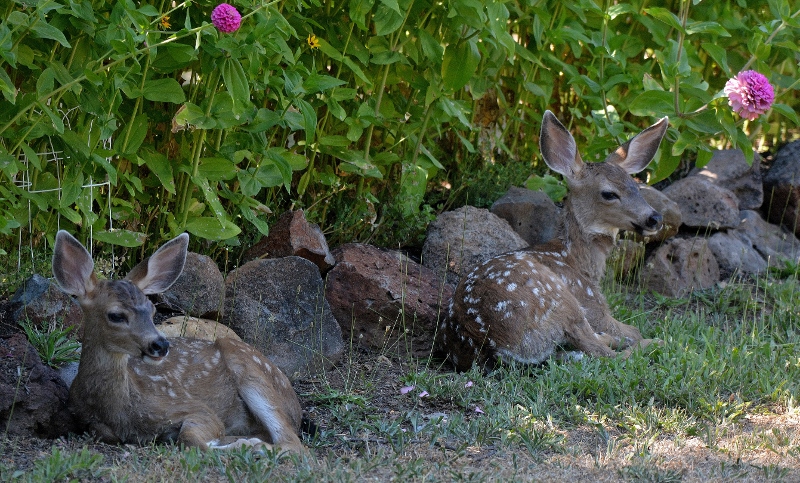

Scenes like this remind Kathy and me of how fortunate we are to live on this island of our own. Photo by Steven T. Callan.
This piece originally appeared in my September 23, 2016, “On Patrol” column in My Outdoor Buddy. It appeared, in updated form, in my January 16, 2020, “On Patrol” column in My Outdoor Buddy and Nor Cal Fish Reports.

